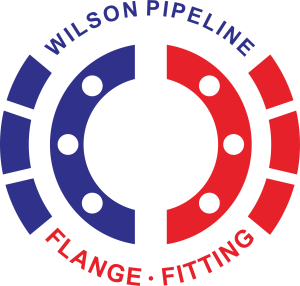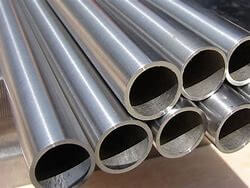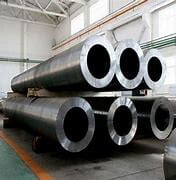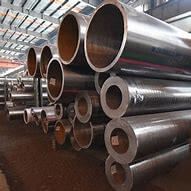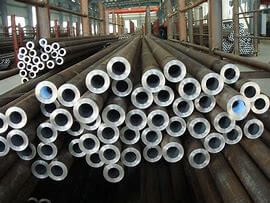The ASME Boiler and Pressure Vessel Code (BPVC) is an American Society of Mechanical Engineers (ASME) standard that provides rules for the design, fabrication, and inspection of boilers and pressure vessels. A pressure component designed and fabricated in accordance with this standard will have a long, useful service life, and one that ensures the protection of human life and property. Volunteers, who are nominated to its committees based on their technical expertise and on their ability to contribute to the writing, revising, interpreting, and administering of the document, write the BPVC.
History
The BPVC got it roots from public outcry after several serious explosions in the state of Massachusetts. A fire-tube boiler exploded at the Grover Shoe Factory in Brockton, Massachusetts on March 20, 1905 which resulted in the deaths of 58 people and injured 150. Then on December 6, 1906 a boiler in the factory of the P.J. Harney Shoe Company exploded in Lynn, Massachusetts. As a result the state of Massachusetts enacted the first legal code based on ASME’s rules for the construction of steam boilers in 1907.
ASME convened the Board of Boiler Rules before it became the ASME Boiler Code Committee which was formed in 1911. This committee put in the form work for the first edition of the ASME Boiler Code – Rules for the Construction of Stationary Boilers and for the Allowable Working Pressures, which was issued in 1914 and published in 1915.
The first publication was known as the 1914 edition, and it developed over time into the ASME Boiler and Pressure Vessel code, which today has over 92,000 copies in use, in over 100 countries around the world.
The first edition of the Boiler and Pressure Vessel Code (1914 edition) consisted of one book, 114 pages long, measuring 5 x 8 inches which evolved into today’s edition which consists of 28 books, including twelve dedicated to the construction and inspection of nuclear power plant components and two Code Case books. (The 2001 edition of the Boiler and Pressure Vessel Code is more than 16,000 pages.) The 28 books are either standards that provide the rules for fabricating a component or they are support documents, such as Materials, Nondestructive Examination, and Welding and Brazing Qualifications.
After the first edition of the Code, the verifications that the manufacture was to the Code was performed by independent inspectors, which resulted in a wide range of interpretations. Hence in February 1919, the National Board of Boiler and Pressure Vessel Inspectors was formed.
Code Sections – List of ASME BPVC Sections
Section I – Rules for Construction of Power Boilers
Section II – Materials
Section III – Rules for Construction of Nuclear Facility Components
Section IV – Rules for Construction of Heating Boilers
Section V – Nondestructive Examination
Section VI – Recommended Rules for the Care and Operation of Heating Boilers
Section VII – Recommended Guidelines for the Care of Power Boilers
Section VIII – Rules for Construction of Pressure Vessels
Section IX – Welding and Brazing Qualifications
Section X – Fiber-Reinforced Plastic Pressure Vessels
Section XI – Rules for Inservice Inspection of Nuclear Power Plant Components
Section XII – Rules for the Construction and Continued Service of Transport Tanks
Some sections have several subsections/devisions; Section VIII, is described more detailed (see below).
Addenda
An addenda, which includes additions and revisions to the individual Sections of the Code are issued accordingly for a particular edition of the code up until the next edition.
Interpretations
ASME’s interpretations to submitted technical queries relevant to a particular Section of the Code are issued accordingly. Interpretations are also available through the internet.
Code Cases
Code Cases provide rules that permit the use of materials and alternative methods of construction that are not covered by existing BPVC rules. For those Cases that have been adopted will appear in the appropriate Code Cases book.. “Boilers and Pressure Vessels” and “Nuclear Components.”
Codes Cases are usually intended to be incorporated in the Code in a later edition. When it is used, the Code Case specifies mandatory requirements which must be met as it would be with the Code. There are some jurisdictions that do not automatically accept Code Cases.
ASME BPVC Section VIII (the section consists of 3 divisions)
Division 1
This division covers the mandatory requirements, specific prohibitions and nonmandatory guidance for materials, design, fabrication, inspection and testing, markings and reports, overpressure protection and certification of pressure vessels having an internal or external pressure which exceeds 15 psi (100 kPa).
The pressure vessel can be either fired or unfired. The pressure may be from external sources, or by the application of heating from an indirect or direct source, or any combination thereof.
The Division is not numbered in the traditional method (Part 1, Part 2 etc.) but is structured with Subsections and Parts which consist of letters followed by a number. The structure is as follows..
Subsection A – General Requirements
- Part UG – General Requirements for All Methods of Construction and All Materials
Subsection B – Requirements Pertaining to Methods of Fabrication of Pressure Vessels
- Part UW – Requirements for Pressure Vessels Fabricated by Welding
- Part UF – Requirements for Pressure Vessels Fabricated by Forging
- Part UB – Requirements for Pressure Vessels Fabricated by Brazing
Subsection C – Requirements Pertaining to Classes of Materials
- Part UCS – Requirements for Pressure Vessels Constructed of Carbon and Low Alloy Steels
- Part UNF – Requirements for Pressure Vessels Constructed of Nonferrous Materials
- Part UHA Requirements for Pressure Vessels Constructed of High Alloy Steel
- Part UCI – Requirements for Pressure Vessels Constructed of Cast Iron
- Part UCL – Requirements for Welded Pressure Vessels Constructed of Material With Corrosion Resistant Integral Cladding, Weld Metal Overlay Cladding, or with Applied Linings
- Part UCD – Requirements for Pressure Vessels Constructed of Cast Ductile Iron
- Part UHT – Requirements for Pressure Vessels Constructed of Ferritic Steels With Tensile Properties Enhanced by Heat Treatment
- Part ULW – Requirements for Pressure Vessels Fabricated by Layered Construction
- Part ULT – Alternative Rules for Pressure Vessels Constructed of Materials Having Higher Allowable Stresses at Low Temperature
- Part UHX – Rules for Shell-and-Tube Heat Exchangers
- Part UIG – Requirements for Pressure Vessels Constructed of Impregnated Graphite
Division 2 – Alternative Rules
This division covers the mandatory requirements, specific prohibitions and nonmandatory guidance for materials, design, fabrication, inspection and testing, markings and reports, overpressure protection and certification of pressure vessels having an internal or external pressure which exceeds 15 psi (103 kPa).
The pressure vessel can be either fired or unfired. The pressure may be from external sources, or by the application of heating from an indirect or direct source as a result of a process, or any combination of the two.
The rules contained in this section can be used as an alternative to the minimum requirements specified in Division 1. Generally the Division 2 rules are more onerous than in Division 1 with respect to materials, design and nondestructive examinations but higher design stress intensity values are allowed.
Division 3 – Alternative Rules for Construction of High Pressure Vessels
This division covers the mandatory requirements, specific prohibitions and nonmandatory guidance for materials, design, fabrication, inspection and testing, markings and reports, overpressure protection and certification of pressure vessels having an internal or external pressure which exceeds 10,000 psi (70,000 kPa).
The pressure vessel can be either fired or unfired. The pressure may be from external sources, by the application of heating from an indirect or direct source, process reaction or any combination thereof.
